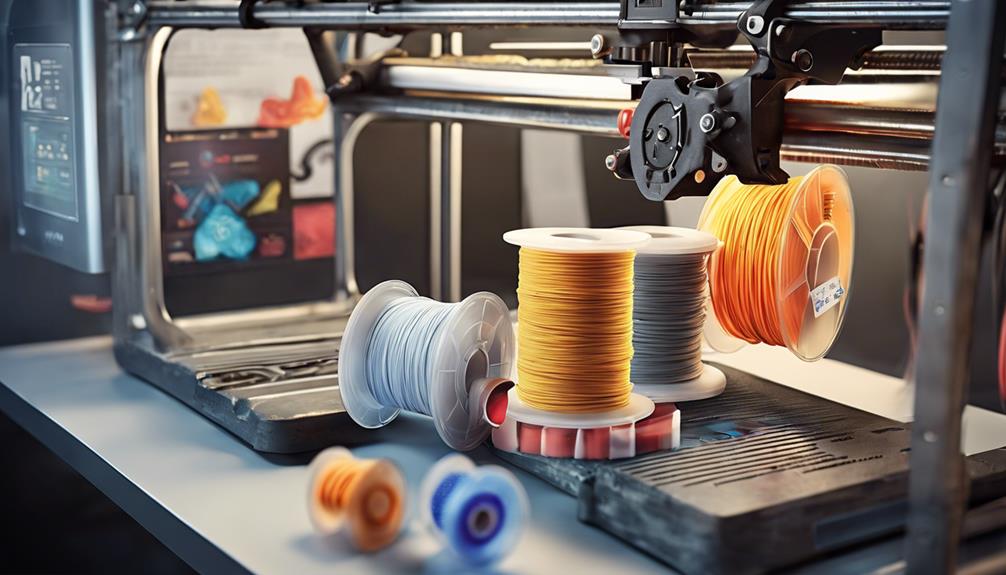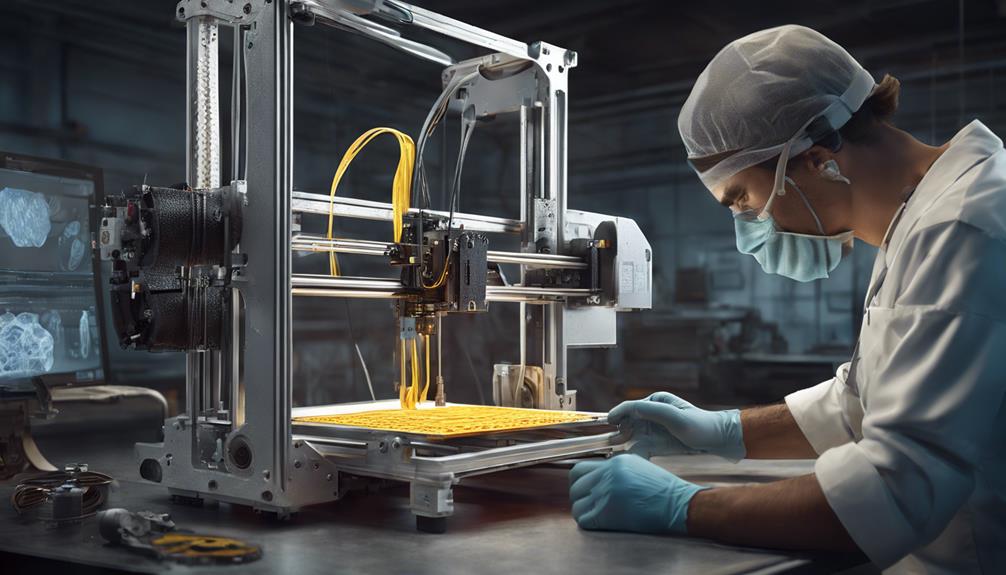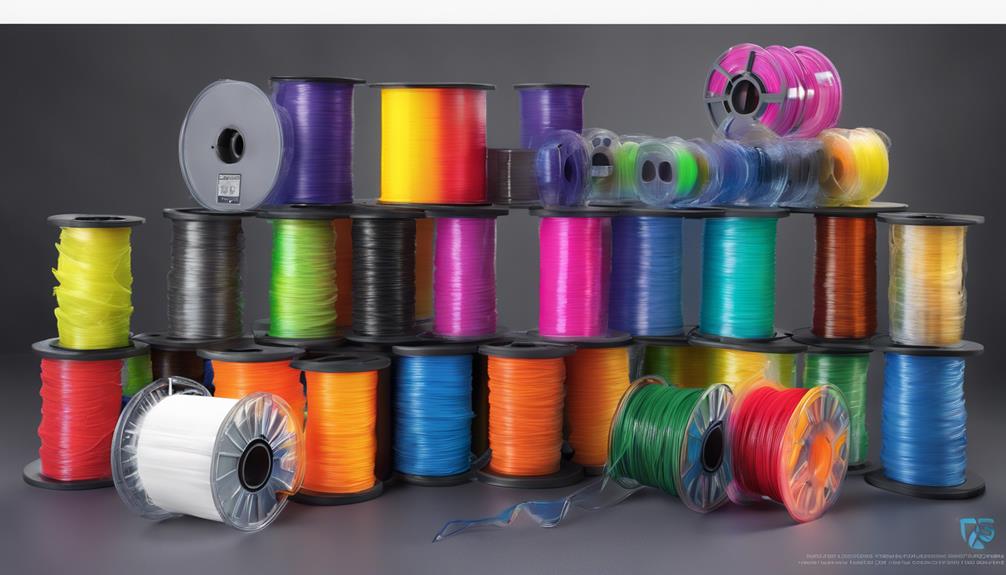When it comes to 3D printing, the importance of using FDA-approved filaments cannot be overstated. Ensuring the safety of your 3D printing projects, especially those involving items like utensils or medical devices, hinges on the materials you choose. But what exactly makes these filaments stand out from the rest? Let's explore how FDA approval can be the key to accessing a world of safe and reliable 3D printing possibilities.
Importance of FDA Approval

When guaranteeing the safety of your 3D printed cookie cutters, prioritizing FDA approval is essential. FDA-approved filaments undergo thorough testing to ensure they're safe for food contact.
By choosing FDA-approved filaments for your cookie cutters, you can trust that they meet strict safety standards and don't contain harmful substances. These filaments are designed specifically for applications where contact with food is involved, giving you peace of mind while baking.
Always look for the FDA approval label when selecting filaments for your 3D printing projects. Prioritizing FDA-approved filaments is a proactive step in guaranteeing the safety and well-being of those who'll be using the printed cookie cutters.
Safe Filament Selection Tips
For safe filament selection when 3D printing cookie cutters, prioritize FDA-approved options to guarantee food safety. Look for filaments labeled as FDA-approved to confirm they meet strict food safety standards.
Choose PLA or PETG filaments over ABS and ASA for safer printing practices. Verify that the filament pigments are non-toxic to prevent any harmful chemicals from leaching into food items.
Opt for reputable brands known for producing FDA-approved filaments to minimize health risks. Prioritizing FDA-approved filaments not only guarantees food safety but also gives you peace of mind when using your 3D printed cookie cutters for culinary creations.
Post-Printing Safety Measures

After completing the 3D printing process, make sure to implement essential safety measures to safeguard against potential risks when using your printed items.
Start by thoroughly cleaning your printed objects to remove any leftover residue or particles. Inspect the items for any rough surfaces or imperfections that could harbor bacteria.
Consider applying a food-safe epoxy resin coating to create a smooth, easy-to-clean surface. When using your printed items, be mindful of their intended purpose and avoid exposing them to liquids or high temperatures.
Regularly inspect and maintain your printed objects to ensure ongoing safety.
Health and Hygiene Prioritization
Prioritize the health and hygiene of yourself and others by maintaining cleanliness and safe practices when utilizing 3D printed items. Regularly wash 3D printed items used for food with hot, soapy water, and guarantee thorough drying before reuse.
Use designated items for specific purposes to prevent cross-contamination. Consider implementing a rotation system for frequently used items to limit bacterial accumulation.
Avoid exposing 3D printed items to high temperatures, as this may compromise their integrity. Be mindful of cracks or crevices that can harbor bacteria and clean these areas diligently.
Recommended Filament Choices

When selecting filaments for 3D printing, prioritize safety and opt for FDA-approved materials to guarantee the integrity of your printed items. Here are four recommended filament choices to secure safe 3D printing:
- PETG Filament: Known for its safety, PETG is recommended for food-related items due to its resistance to warm temperatures.
- PLA Filament: Considered generally safe, PLA is a good choice for non-food items where safety is still a priority.
- FDA-Approved ABS Filament: For projects requiring ABS, make sure it's FDA-approved to maintain safety standards.
- Non-Toxic Filament Pigments: When adding color to your prints, use pigments that are non-toxic to uphold safety standards.
Frequently Asked Questions
Can I Use Any 3D Printing Filament for Making Cookie Cutters?
Yes, use FDA-approved filaments like PLA or PETG for safe cookie cutter printing. Prioritize safety, avoid ABS and ASA filaments, and guarantee non-toxic pigment. Opt for 100% infill, simple shapes, and FDA-approved epoxy coating for enhanced safety.
How Can I Ensure My 3D Printed Cookie Cutters Are Safe for Food?
To guarantee your 3D printed cookie cutters are safe for food, prioritize material choice, post-processing, and cleanliness. Opt for FDA-approved filaments like PLA or PETG, consider epoxy coating, and maintain hygiene. Your health and safety matter most.
Are There Specific Cleaning Instructions for 3D Printed Cookie Cutters?
When cleaning 3D printed cookie cutters, use warm soapy water and a soft brush to gently scrub away any food residue. Guarantee thorough drying post-cleaning to prevent bacterial growth and maintain hygiene standards.
What Precautions Should I Take When Using 3D Printed Cookie Cutters?
When using 3D printed cookie cutters, prioritize safety by choosing FDA-approved filaments. Opt for easy-to-clean designs, avoid toxins, and maintain hygiene. Consider PETG or PLA filaments for better safety. Prioritize cleanliness and use caution with food contact items.
Is There a Difference in Safety Between Various Types of Filament for Food-Related Items?
When it comes to food-related items, safety varies among filaments. Factors like FDA approval, material composition, and post-processing techniques influence safety. Choosing FDA-approved PETG or PLA filaments over ABS is advisable for safer 3D printing.
Conclusion
Now that you've learned about the importance of FDA-approved filaments for safe 3D printing, imagine a world where your creations not only look amazing but are also guaranteed to be safe for you and your loved ones.
By choosing FDA-approved filaments, you can create with confidence, knowing that your projects aren't only visually stunning but also free from any potential health risks.
So go ahead, let your creativity soar with the peace of mind that comes from using safe materials.